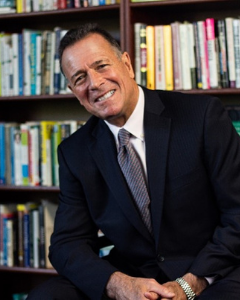

 By Tino Mantella
By Tino Mantella
TLG President & CEO
What do children have more of than adults? It’s curiosity. Brixley, my grandchild, just turned four. Her mom and dad told her they were very sad that she was not staying three. She responded, in all seriousness, with “it’s too late, I am four now”. Brix is a fearless young lady. Additionally, like most children her age, she is an explorer. I enjoy watching her go from activity to activity without missing a beat. She can keep herself occupied for long periods of time studying how to build, lift, swing, draw, paint, and whatever else strikes her fancy or is in front of her at the time. She also innocently asks question after question to anyone within ear shot.
Retaining a high level of curiosity as we move through adulthood is not easy for most of us. When I was running the YMCA of Chicago, I had the opportunity to bring together a group of some of the most talented leaders from across the Y movement. Convening at an innovation center in Cincinnati, our task was to develop the next generation of activities for the YMCA. The Founder of the facility and program was a past executive from Proctor and Gamble. He bought a mansion (“mansion” is a stretch but that is what it was called) and would bring in business leaders from top companies and NFPs to develop their future products and services.
So, how did we prepare to be open and curious? How did we get rid of our protective shields to think outside of the box? We became children again. The first day of the session and throughout the entire program we played. Toys included silly-string, super soakers, hula-hoops, crayons, yo-yos, and much, much more. We had a blast, and along the way we lost all of our inhibitions. By the end of the third day, we had developed a number of new services for the YMCA that are still in place today.
As the CEO of the Chicago Y, which was one of the largest Ys in the world, we encouraged our 4,500 employees to be curious and innovative. We encouraged them to not see themselves as a Y that was stuck on doing what had been done for the last one-hundred years, but to explore and create. The outcome was an amazing amount of innovation. The Chicago Y team was one of the first to build indoor and outdoor skateboard parks, Family Adventure Centers with mega climbing walls, a 200 seat state-of-the-art theater, Y’s in a box (a precursor to the generation of the thousands of small standalone fitness/recreation facilities that are commonplace today), and we even had the first Ben & Jerry’s in a YMCA- designed to break down the “town & gown” that was occurring in our facility with 600+ underprivileged residents. Furthermore, the Y was like no other, with more than 1,000 children in our foster care program. Additional services included gang-intervention, infant-mortality prevention, senior care, and others not normally associated with YMCAs. The employees and volunteers were free to break the mold, and they often did.
My premise when I began writing this article, was that younger people invent more than older adults because they are less inhibited, more curious, and they carry less baggage. Albert Einstein, for example, published his papers on relativity when he was only 26. Thomas Edison was in his 20s when he developed telegraph-related products, and was 30 when he invented a safe, inexpensive, electric light.
Curiosity, which I link to invention, doesn’t seem to be the purview of the young any longer. According to researcher and Nobel Price winner Benjamin Jones, “over the past half-century the average age at which individuals produce notable inventions and ideas has increased steadily”. He goes on to point out that “the most striking finding, however, is that the age distribution shifts over time, with the mean age of great achievement rising by five or six years per century”. Matt Nesvisky wrote about this in the National Bureau of Economic Research journal. He surmises the following: “one possible explanation for this age shift is a decline in the productivity of younger innovators in favor of older innovators. It may well be that the younger innovators are devoting themselves to an increasing amount of education and training. Or, it may be that the productivity of older innovators is increasing in relative terms simply because innovators are living longer. If we accept that raw ability declines over the life cycle while experience increases, then the shift in the distribution may indicate the rising importance of experience over ability. Alternatively, improved health care may spell increased ability and effort at later ages”.
I am happy to learn that the youth don’t own curiosity or the corresponding innovation. As people live longer, those that live their lives to the fullest are still explorers. We read about people getting advanced degrees in their 80s, learning to play an instrument, and fulfilling their dreams, whatever they may be. One leader I know just got back from a fishing trip to Alaska with his father-in-law. His father-in-law is 92. Why did his father-in-law want to take the trip? He was curious because he had never fished in Alaska before.
There is a scene in
A Wonderful Life where Jimmy Stewart and Donna Reed are getting ready to kiss, and the neighbor from across the way asks him why he doesn’t kiss her already, and then says “youth is wasted on the wrong people” (
watch it here). Well, maybe youth isn’t wasted on the young any longer. The good news is you can remain curious and young if you choose to do it.
Think forever young and curious,
Tino
More about Tino
Contact Info:
Tmantella@turknett.com
Cell: 678-984-8528




 By Tino Mantella
By Tino Mantella